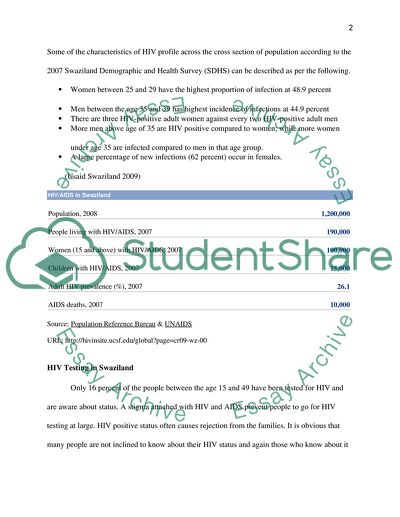Cite this document
(AIDS/HIV Epidemic in Swaziland Research Paper Example | Topics and Well Written Essays - 2000 words - 1, n.d.)
AIDS/HIV Epidemic in Swaziland Research Paper Example | Topics and Well Written Essays - 2000 words - 1. Retrieved from https://studentshare.org/health-sciences-medicine/1751618-aidshiv-epidemic-in-swaiziland
AIDS/HIV Epidemic in Swaziland Research Paper Example | Topics and Well Written Essays - 2000 words - 1. Retrieved from https://studentshare.org/health-sciences-medicine/1751618-aidshiv-epidemic-in-swaiziland
(AIDS/HIV Epidemic in Swaziland Research Paper Example | Topics and Well Written Essays - 2000 Words - 1)
AIDS/HIV Epidemic in Swaziland Research Paper Example | Topics and Well Written Essays - 2000 Words - 1. https://studentshare.org/health-sciences-medicine/1751618-aidshiv-epidemic-in-swaiziland.
AIDS/HIV Epidemic in Swaziland Research Paper Example | Topics and Well Written Essays - 2000 Words - 1. https://studentshare.org/health-sciences-medicine/1751618-aidshiv-epidemic-in-swaiziland.
“AIDS/HIV Epidemic in Swaziland Research Paper Example | Topics and Well Written Essays - 2000 Words - 1”, n.d. https://studentshare.org/health-sciences-medicine/1751618-aidshiv-epidemic-in-swaiziland.


